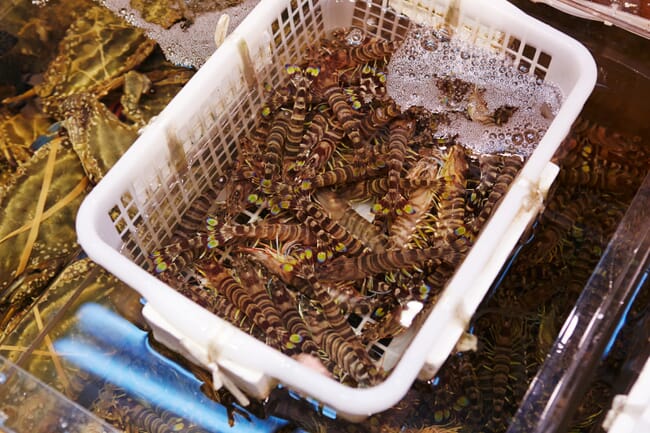
So claim researchers from the Okinawa Institute of Science and Technology Graduate University (OIST) and Tokyo University of Marine Science and Technology, who have used two different techniques in a bid to uncover immunity-, growth-, and reproduction-related genes.
Background
Kuruma shrimp are one of the largest species of prawn (females can reach 27cm in length!) and are found throughout the Indian and Pacific Oceans. In Japan, they’re considered a delicacy and have been a major fisheries and aquaculture product (especially in Okinawa) since the early 20th century. However, shrimp farms have experienced issues related to white spot disease – a viral infection which is one of the most threatening pathogens to shrimp aquaculture worldwide.
“We’re interested in the relationship between
aquaculture animals and disease-related bacteria and viruses,” explained Dr
Eiichi Shoguchi, a group leader in the marine genomics unit at OIST, in a press
release. “Having this genetic resource on hand could be useful for producing a
disease-resistant line of the shrimp or vaccines.”
Genetic research
Supported by OIST’s DNA Sequencing Section, the researchers used two different techniques—genome sequencing and transcriptome sequencing—to produce this genetic resource. Their work was published in G3: Genes l Genomes l Genetics.
Firstly, the researchers focused on deciphering the genome. They took one kuruma shrimp from a commercial farm in Okinawa and generated the initial sequences. This produced many short DNA sequences which, although useful, didn’t provide the researchers with enough clues to string them together. Essentially, they had all the pieces of a puzzle but no way of assembling it. They then used a second technology to produce longer, but less precise, DNA sequences–the scaffolding of the genome. By bringing the two sequences together they were able to assemble a draft of the genome.
Following this, the researchers analyzed 49 RNA samples of different shrimp individuals (including both adults and larvae). This provided them with 66,406 high-quality gene readouts—the draft of the transcriptome.
"The kuruma shrimp genome provides us with a comprehensive catalogue of immune-related genes,” explained Satoshi Kawato, lead author of the paper and PhD student at the Laboratory of Genome Science, Tokyo University of Marine Science and Technology. “This will allow us to better understand how shrimp respond to pathogens and will aid in developing strategies for preventing disease outbreaks. The genomic resources will also help address various other aspects of shrimp biology, such as growth and reproduction."
When their work was compared to that of the kuruma shrimp’s relatives—the giant tiger prawn and the whiteleg shrimp—nearly 70 percent genes was found to be the same across all three species, meaning that a high number of genes have been preserved.
“We think that this will serve as a useful resource for future research to understand the shrimp’s basic biology,” concluded Dr Shoguchi. “But it could also be used for fishery management and to establish a breeding program.”




